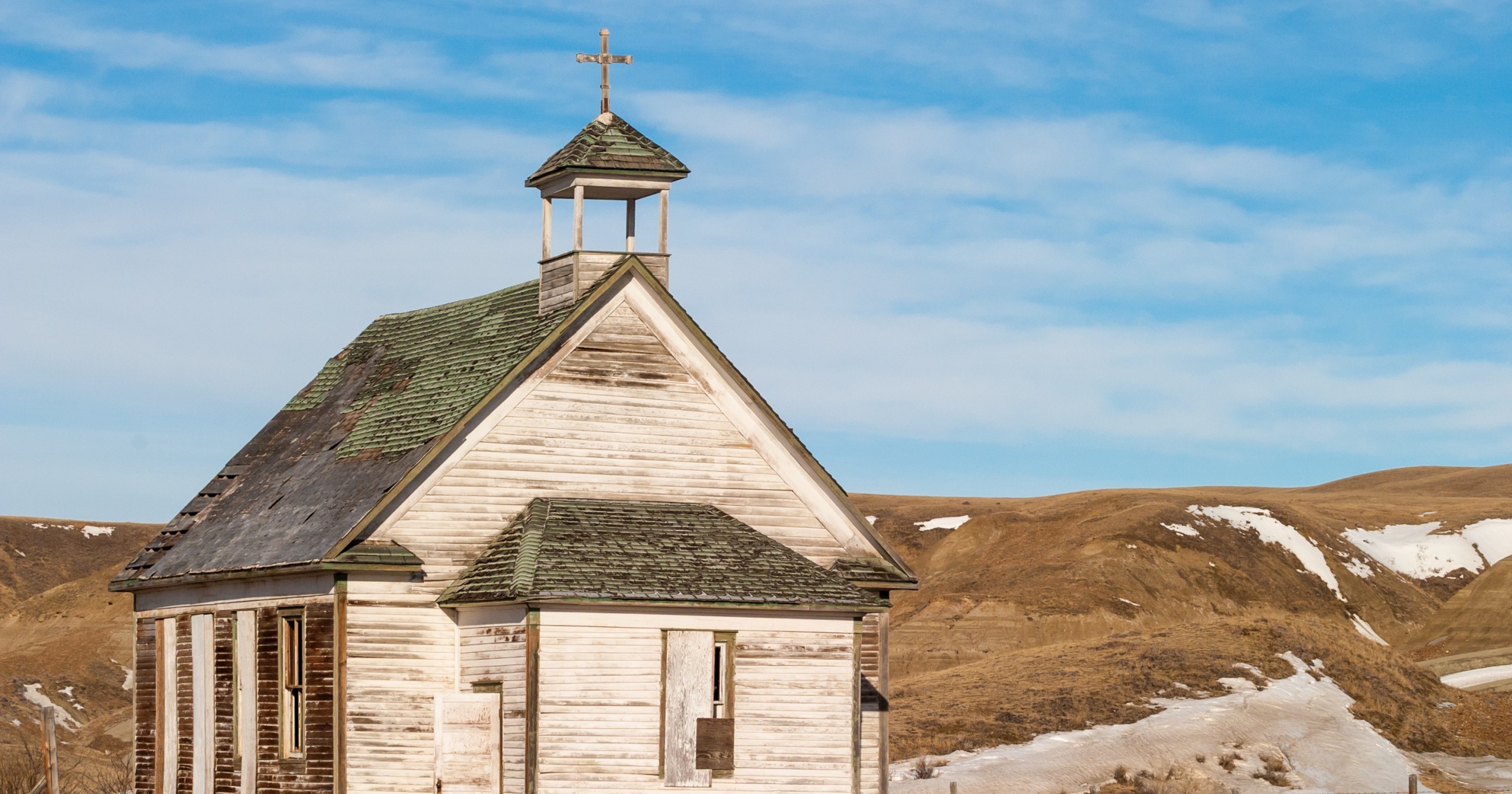
It was the fall of 1945.
A young marine cautiously stepped into the sunlight. After months of recovery, Kye was finally leaving the USMC hospital. His young bride smiled and squeezed his hand, reminding him that they could face anything together. He’d survived Iwo Jima and returned to her. It was time to start their lives together.
But this life wasn’t going to be an easy one. He was a new Christian, full of enthusiasm and zeal. She was a woman in love, deeply dedicated to her husband and her Lord. Together, they felt God calling them to a life of service.
It wasn’t long before Kye and Frances Harris found their ministry. Together, they joined the Christian School movement of the 1950s and 1960s. For the next 30 years, their family moved around the U.S., working with local churches to plant Christian schools in the surrounding communities. Through the work of pioneers like Kye and Frances, the country experienced school choice and offered Christian families a faith-based option for their children.
Despite the long and challenging road that visionaries like Kye and Frances traveled in the late 20th century, this was not the origin of Christian education in the U.S.
A Religious Foundation
Early in America’s infancy, the public school system as we know it today did not exist.
In fact, in 1776, when our country was officially born, most children were educated at home. The few established community schools were religion-based, and the children who attended these schools learned through the lens of the school’s prevailing theology.
The Classroom.com explains, “The history of Christian education in America dates back to the 1700s with influence from Christian schools in England that were run by the Catholic church. Early settlers in America, which included the Quakers, Mennonites, Presbyterians, Catholics, and Baptists, educated their children in schools that were formed for the purposes of religious education.”
But Christian education in America goes back even further. One of the first education laws in the New World, the Old Deluder Satan Act, was passed in Massachusetts Colony in 1647. The law’s preamble made the religious nature of education in the colony very clear when it stated two objectives of the lawmakers:
- To counter one of Satan’s priorities: keeping humanity from learning the Scriptures.
- To ensure that learning the Scriptures and Scriptural principles continued and didn’t die with the older generations.
This law stipulated that a community school should be established once a township reached a threshold number of households. These schools were for educating children academically while cultivating their religious beliefs. Early American education was nearly synonymous with religious education; holy books and texts, primarily the Bible, were used as education material.
To ensure that the Devil failed in spreading ignorance of the Scriptures, communities established the first public school system. Since education in early America was founded on Christianity and the Scriptures, the history of America’s Christian schools dates back to the very beginning of our country.
The Founders
Christian education was the hope of the future in the minds of our colonial forefathers. Bringing up a generation of children who understood faith-based principles was a key priority.
Founder Samuel Adams wrote, “Let Divines, and Philosophers, Statesmen, and Patriots unite…by impressing the Minds of Men with the importance of educating their little boys, and girls…in short of leading them in the Study, and Practice of the exalted Virtues of the Christian system.”
Even American universities were founded based on religious education. For instance, Harvard University included several rules that enforced a Christian worldview, both in thought and practice, such as this one, “Every one shall so exercise himself in reading the Scriptures twice a day, that he shall be ready to give such an account of his proficiency therein, both in theoretical observations of the language, and logic, and in practical and spiritual truths, as his tutor shall require, according to his ability; seeing the entrance of the word giveth light, it giveth understanding to the simple, Psalm. 119. 130.”
With Christian education so deeply ingrained in the fabric of our country, the Christian school movement of the mid-20th century seemed to be a natural continuation.
Curriculum
Today, students have a tremendous number of resources at their disposal. Curricula abound, and a child might graduate from school after using a mountain of different textbooks to complete their education.
The students of early America through the mid-1800s had a much simpler education style than today. Using the Bible, McGuffey’s Reader, and the New England Primer, children learned foundational principles, such as reading and writing, through a Christian worldview.
For instance, The Library of Congress explains the New England Primer’s role in education: “Learning the alphabet went hand in hand with learning Calvinist principles in early America. The phrase ‘In Adam’s fall, we sinned all,’ taught children the first letter of the alphabet and the concept of original sin at the same time. More than 6 million copies in 450 editions of the New England Primer were printed between 1681 and 1830 and were a part of nearly every child’s life.”
Whether children were taught at home or through a community classroom, any education at the time can reasonably be called a “Christian school,” based on the overtly Christian curriculum used to lay a religious foundation.
A Shift
As time marched on, however, public education evolved. Horace Mann, “the father of American education,” appeared on the scene in the mid-1830s. He began his revolutionary revamp of the public school system. Mann rejected the idea of proactively teaching Christianity in public schools. Instead, he envisioned a scenario where students were introduced to Christian principles and values without specific religious affiliations or instruction.
Middle Tennessee State University notes, “Mann argued that the common school ‘earnestly inculcates all Christian morals,’ and ‘in receiving the Bible, it allows it to do what it is allowed to do in no other system,—to speak for itself. But here it stops…because [the common school] disclaims to act as an umpire between hostile religious opinions.’”
This philosophy began shifting American schools from decidedly Christian to a fluid moral basis. By the 1960s, the Supreme Court all but removed any direct Christian influence from American public schools.
The State of Christian Education
As the public school system changed, so did the homeschooling scene. In 1870, approximately 65% of children aged 5-17 enrolled in public schools. This left a large number of children continuing their Christian-based education at home. But, by 1899, an estimated 72% of the same age group had entered the public school system.
Homeschooling became an unpopular choice over the next few decades, and Christian schools were nearly non-existent. Various Christian denominations like Catholics maintained their own schools, but by and large, Christian education fell to an all-time low. Cue Kye, Frances, and the Christian school movement that they so whole-heartedly embraced.
“By mid-century, many scholars and large portions of the Christian community were convinced that secular humanism had become a stronger force, at least within state-run public schools, than any of the major religious groups,” notes The Christian Apologetics Ministry.
American Christians were alarmed at the push for secularization within the public school system. Christian influence in the classroom had become not only unpopular but, in some instances, illegal. The surrounding culture began to reflect this change, and the church sprang into action. Here, the modern Christian School movement was born.
Christian Schools Today
Christian education continued to gain popularity through the 80s, 90s, and early 2000s. This rise in religious training encompassed both Christian schools and religious homeschooling. Devout Christian families were tired of seeing their children corrupted by a secular system.
Between 2007 and 2016, Christian education suffered a sharp decline. Homeschooling continued to grow but was less based on religious concerns. American Christianity had become largely comfortable with the secular climate of the nation.
However, a recent change in enrollment trends indicates that Christian parents might return to a faith-based desire for education. Private Christian schools have become a popular choice once again. As of 2017, over 5 million students enrolled in private schools, with 75% of the schools being religiously affiliated.
Post-pandemic education alternatives to public schools have gained popularity, including private religious institutions. NPR addresses the declining enrollment trend in public education, blaming private, religious, and home schools. Parents are removing their kids from the public school setting at a high rate, unwilling to continue to accept Covid-19 protocols and pushing back against the Critical Race Theory agenda.
Education alternatives, including private Christian schools, are benefitting from this public school exodus.
An American Staple: A Summary
America began her journey with Christian education as a priority. Society was family-based, with a strong connection to Scripture, Christ, and an emphasis on teaching God’s principles. This was the foundation for American Christian schools.
As the population grew, they formed community schools with classes centered around the religious nucleus of society. These early Christian schools were the public schools of the time and used the Bible and other Christian books as the curriculum. America’s Christian schools are a cultural staple and have weathered the storms of time and change.
Kye, Francis, and their co-educators successfully revived religious education in the latter half of the 20th century. Offering the church an alternative to the secularists’ education haven, these new pioneers did what no one else in American history had ever been forced to do—carve a space for Christian education without the support or endorsement of the government.
They were successful.
Today, Christian schools look different from their historical counterparts, but they are still relevant and necessary. A refreshing alternative to the secular public school system, private religious schools give religious families an appealing school choice.





[…] 1776, when our country was officially born, most children were educated at home. The few established community schools were religion-based and operated through the lens of the school’s prevailing […]
[…] Read an overview of the history of Christian schools. […]
[…] Read an overview of the history of Christian schools. […]
[…] 1776, when our country was officially born, most children were educated at home. The few established community schools were religion-based and operated through the lens of the school’s prevailing […]